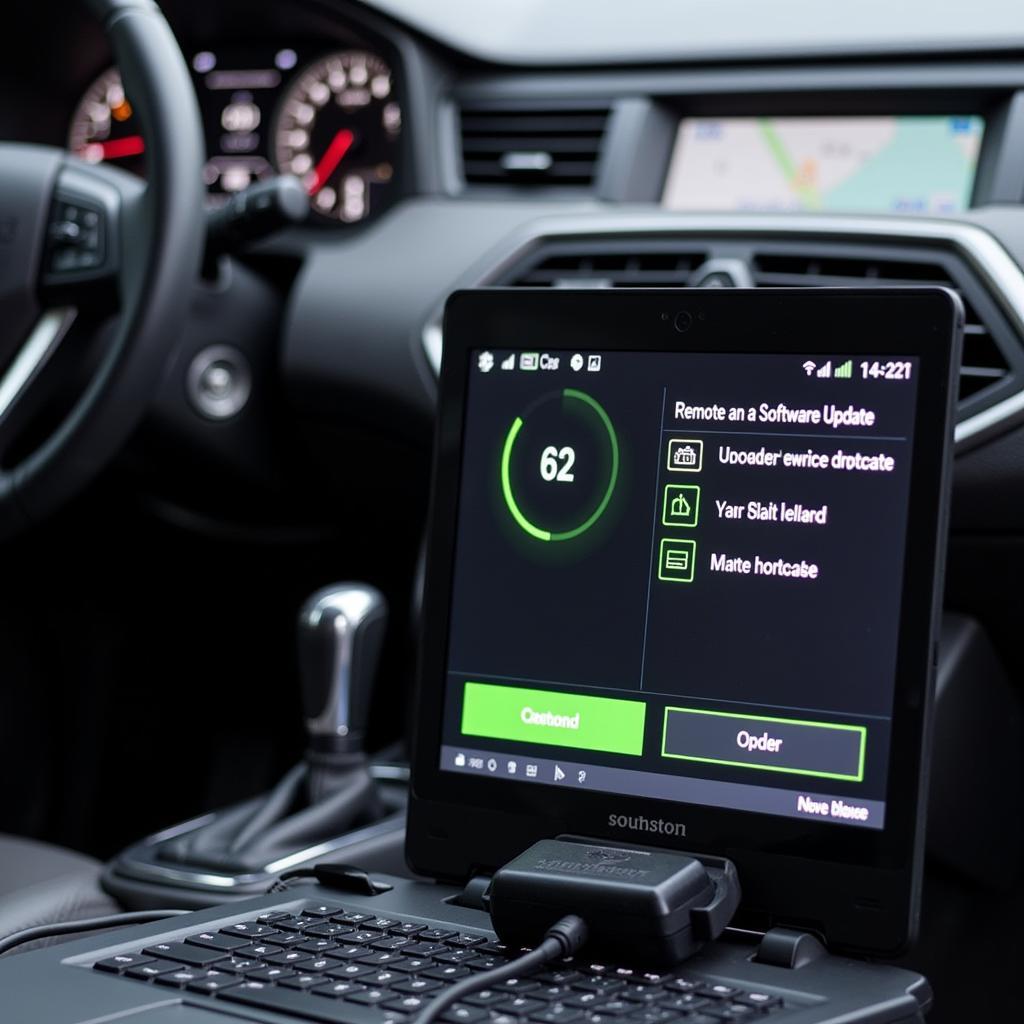The EPC warning light on your Seat Ateca can be a source of anxiety. This guide provides a detailed explanation of the EPC light, its potential causes, and how to address them, including remote diagnostic and software solutions.
Understanding the Electronic Power Control (EPC) system is crucial. It manages several essential engine functions, including fuel injection, ignition, and throttle control. When the EPC light illuminates, it indicates a potential problem within this system, which can impact your vehicle’s performance, fuel efficiency, and even safety.
Decoding the EPC Warning Light Seat Ateca
The EPC light is part of your Seat Ateca’s onboard diagnostic system. It’s designed to alert you to potential issues within the electronic power control system. Ignoring this warning can lead to more severe problems and costly repairs down the line.
Several factors can trigger the EPC warning light. These range from simple issues like a faulty brake light switch to more complex problems involving the throttle body or sensors. Pinpointing the exact cause requires a systematic diagnostic approach.
Common Causes of EPC Warning Light in a Seat Ateca
- Faulty Brake Light Switch: A malfunctioning brake light switch can disrupt the EPC system and trigger the warning light. This is a relatively common issue and often an easy fix.
- Throttle Body Issues: The throttle body controls the airflow into the engine. Problems with the throttle body, such as a faulty sensor or a dirty throttle plate, can activate the EPC light.
- Mass Airflow Sensor (MAF) Problems: The MAF sensor measures the air entering the engine. A faulty MAF sensor can disrupt the air-fuel mixture, leading to poor performance and triggering the EPC warning light.
- Oxygen Sensor Issues: Oxygen sensors monitor the exhaust gases to optimize the air-fuel mixture. A malfunctioning oxygen sensor can cause the EPC light to illuminate.
- Spark Plugs and Ignition Coils: Worn-out spark plugs or faulty ignition coils can lead to misfires and activate the EPC light.
 EPC Warning Light on Seat Ateca Dashboard
EPC Warning Light on Seat Ateca Dashboard
Diagnosing and Fixing the EPC Warning Light
Diagnosing the EPC light requires specialized tools and expertise. While some issues, like a faulty brake light switch, might be visually identifiable, others require a diagnostic scan tool to retrieve fault codes from the vehicle’s computer.
Remote Diagnostics and Software Solutions
Modern automotive technology allows for remote diagnostics and software solutions. This means a qualified technician can access your vehicle’s computer remotely, diagnose the problem, and even install software updates to fix certain issues. This can save you time and money compared to traditional garage visits.
Steps to Take When the EPC Light Appears
- Don’t Panic: While the EPC light can be concerning, it doesn’t always indicate a catastrophic problem.
- Check Your Brake Lights: Ensure your brake lights are functioning correctly. A faulty brake light switch is a common culprit.
- Avoid Aggressive Driving: Drive cautiously and avoid putting unnecessary strain on the engine until the issue is diagnosed.
- Seek Professional Help: If the light persists, contact a qualified technician specializing in Seat vehicles. They can perform a diagnostic scan and identify the root cause. Consider remote diagnostic and software solutions for a convenient and potentially cost-effective option.
 Diagnostic Scan on a Seat Ateca
Diagnostic Scan on a Seat Ateca
“Regular maintenance and timely diagnostics are key to preventing EPC issues and ensuring the optimal performance of your Seat Ateca,” says John Miller, Senior Automotive Diagnostic Technician at AutoTech Solutions.
EPC Warning Light Prevention
Preventing EPC issues involves regular maintenance and addressing potential problems early on. This includes:
- Regularly Servicing Your Vehicle: Follow the manufacturer’s recommended service schedule for your Seat Ateca. This includes regular oil changes, spark plug replacements, and other essential maintenance tasks.
- Addressing Warning Lights Promptly: Don’t ignore any warning lights on your dashboard. Addressing them early can prevent minor issues from escalating into major problems.
- Using Quality Fuel and Parts: Using quality fuel and parts can help prevent issues with the fuel system and other engine components.
Conclusion
The EPC warning light on your Seat Ateca is an important indicator of potential issues within the electronic power control system. Addressing this warning promptly and utilizing remote diagnostic and programming services can save you time and money in the long run. By understanding the potential causes and taking proactive steps, you can keep your Seat Ateca running smoothly and safely.
“Remote diagnostics and software solutions are transforming the way we address vehicle issues,” adds Emily Carter, Lead Software Engineer at Remote Auto Diagnostics. “They offer a convenient and efficient way to diagnose and fix problems, often without even visiting a garage.”
FAQ
-
What does the EPC light mean? The EPC light indicates a problem with your Seat Ateca’s Electronic Power Control system.
-
Is it safe to drive with the EPC light on? While you might be able to drive, it’s recommended to avoid aggressive driving and seek professional help as soon as possible.
-
What are the common causes of the EPC light? Common causes include a faulty brake light switch, throttle body issues, MAF sensor problems, oxygen sensor issues, and spark plug or ignition coil problems.
-
How can I diagnose the EPC light? A diagnostic scan tool is necessary to retrieve fault codes from the vehicle’s computer. Remote diagnostics can also be performed by a qualified technician.
-
How can I fix the EPC light? The fix depends on the underlying cause. It could range from a simple switch replacement to more complex repairs. Software updates can also resolve certain issues.
-
Can remote diagnostics fix the EPC light? Yes, in some cases, remote diagnostics and software updates can fix the problem without needing a physical visit to a garage.
-
How can I prevent the EPC light from coming on? Regular maintenance, addressing warning lights promptly, and using quality fuel and parts are key to prevention.


